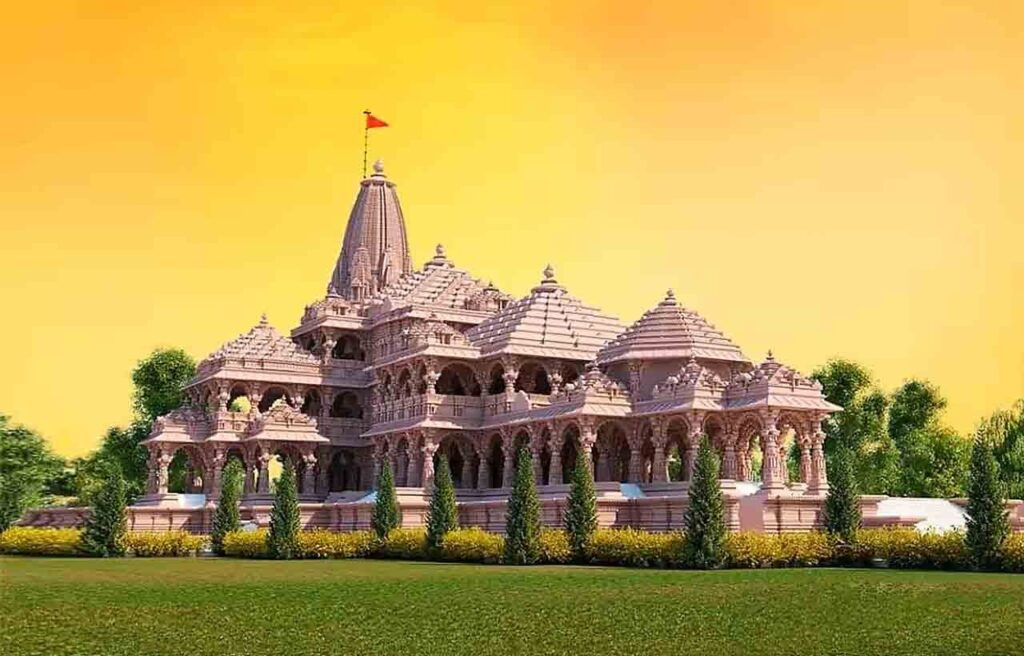The Ram Mandir, a symbol of profound spiritual significance and cultural heritage, stands majestically in Ayodhya and is dedicated to Ram Lalla, the child form of Lord Ram.
This grand temple is a testament to India’s rich architectural legacy and a marvel of modern engineering. Constructed with meticulous attention to tradition and utilizing cutting-edge technology, the Ram Mandir showcases a unique blend of heritage and innovation.
Traditional Indian Heritage Architecture: The Ram Mandir at Ayodhya is a grand temple dedicated to Ram Lalla, the child form of Lord Ram. It is an amalgamation of traditional Indian heritage architecture.
Architectural Design by Chandrakant Sompura: The temple’s architectural design follows the Nagar Shaily, representing northern Indian temple designs. Chandrakant Sompura, a heritage temple architect with a family tradition spanning 15 generations, designed the structure.

Contributions of Top Indian Scientists: The temple construction involves contributions from top Indian scientists, with even ISRO technologies being utilized in the project.
Materials Used: The temple uses the best quality granite, sandstone, and marble. Notably, cement or lime mortar is not used in the joints; instead, a lock and key mechanism employing grooves and ridges has been used throughout.
Size and Height: The total temple area is 2.7 acres, with a built-up area of about 57,000 square feet. The temple is a three-floor structure, and its height reaches 161 feet, approximately 70% of the height of the Qutub Minar.
Foundation Engineering: Due to the proximity of the Sarayu River, the temple faces challenges with sandy and unstable ground. An innovative solution involves excavating, laying engineered soil, and placing a metal-free concrete raft for reinforcement.
Structural Design: The Central Building Research Institute (CBRI) was involved in the structural design of the three-floored temple, ensuring it can withstand an earthquake with a return period of 2,500 years.
Stone Selection: Pink sandstone called ‘Bansi Paharpur’ from Rajasthan is used for the visible parts of the temple. The sanctum sanctorum is adorned with white Makrana marble from Rajasthan, the same marble used in the construction of the Taj Mahal.
Dry-Jointed Structure: The temple is a dry-jointed structure designed for a 1000-year lifespan. It consists solely of interlocked stone without steel reinforcement.
Heritage Architecture with Modern Techniques: While the temple’s base reflects heritage architecture, modern finite element analysis, sophisticated software tools, and 21st-century building codes define its construction.
Involvement of CBRI: The CBRI contributed to various aspects of the project, including the structural design of the main temple, design of the ‘Surya Tilak’ mechanism, design vetting of the temple foundation, and structural health monitoring of the main temple.
